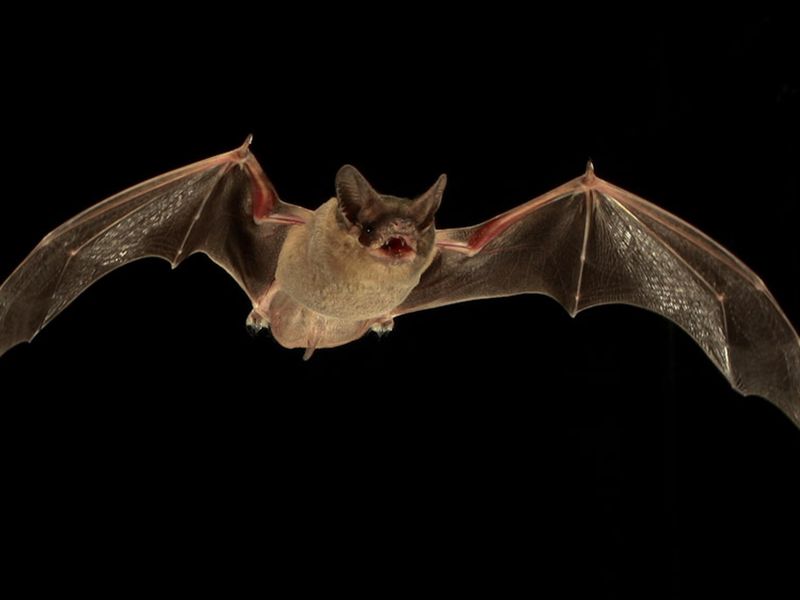|
Bats are flying mammals and found in nearly every habitat throughout Ohio. In fact, most bats live near humans without ever being detected. Of the over 1250 bat species worldwide, there are 13 species of bats recorded in Ohio. The most commonly encountered species generally include the little brown bat (Myotis lucifugus) and big brown bat (Eptesicus fuscus). Bats are a rabies vector species, but it is very uncommon to encounter a rabid bat. (www.ohiowildlifecenter.org/help-wildlife/found-an-animal/helping-wildlife-bats/).
Bats are very important to the environment! Bats feed one or two hours after sunset and also before sunrise. In one night, a single bat can eat thousands of mosquitoes and other flying insects. Multiply this number by number of bats in a colony, and the benefit to humans is enormous! Not only do bats help slow the spread of disease by vector species like mosquitoes, but reducing pests also saves money. Farmers can save money on pesticide use thanks to these natural pest predators, and that savings gets passed on to the consumer. To learn more about bats and Bat Week, check out these bat conservation resources! www.batweek.org www.batcon.org wildlife.ohiodnr.gov/species-and-habitats/species-guide-index
0 Comments
 Natural Resources Conservation Service LEBANON SERVICE CENTER 777 COLUMBUS AVE STE 3A LEBANON, OH 45036-1682 (513) 282-2957 Program Contact: Beth Lessick District Conservationist Phone: 513-282-2955 Email: Elizabeth.Lessick@oh.usda.gov The U.S. Department of Agriculture's Natural Resources Conservation Service (NRCS) announced Friday, October 19, 2018, as the deadline to submit applications for the Environmental Quality Incentives Program (EQIP) in Ohio. EQIP is a voluntary conservation program which helps producers make conservation work for them. Together, NRCS and producers invest in solutions that conserve natural resources for the future while also improving agricultural operations. Through EQIP, NRCS provides agricultural producers with financial resources and one-on-one help to plan and implement improvements, or what NRCS calls conservation practices. Using these practices can lead to cleaner water and air, healthier soil and better wildlife habitat, all while improving agricultural operations. Through EQIP, you can voluntarily implement conservation practices, and NRCS co-invests in these practices with you. Financial assistance is now available in a variety of agricultural categories such as cropland, forestry, pasture operations, and organic. Several special projects are also available which address water quality, forestry management, improving pollinator populations, applying best management practices and many more. All available agricultural categories are listed on the Ohio NRCS website under “EQIP Application Deadlines.” To participate in USDA conservation programs, applicants should be farmers or farm or forest landowners and must meet eligibility criteria. Applications signed and submitted to NRCS by the October 19 deadline will be evaluated for fiscal year 2019 funding. To learn more about EQIP or other technical and financial assistance available through NRCS conservation programs, visit Get Started with NRCS or visit your local USDA Service Center. Web: www.oh.nrcs.usda.gov |
Details
Warren County SWCD Staff BlogA blog to keep you informed on all the latest news at Warren County SWCD and in the conservation world. Archives
May 2024
Categories
All
|
|
|
Contact:PHONE: (513) 695 - 1337
EMAIL: [email protected] HOURS: Monday - Friday 7:30am - 4:00pm (except holidays) Connect:Warren County Soil & Water Conservation District Copyright © 2016
Warren SWCD Privacy Notice. Emails are serviced by Constant Contact. Constant Contact's Privacy Notice. |


